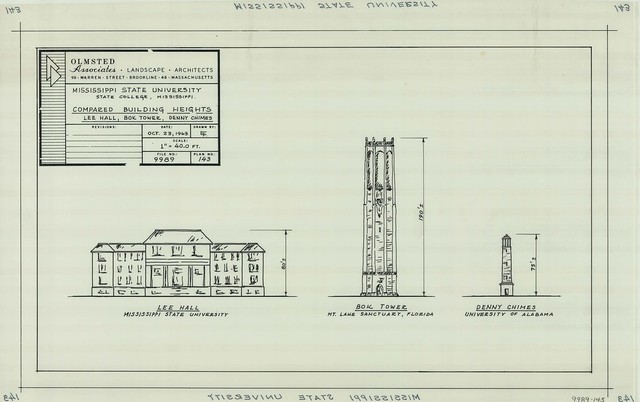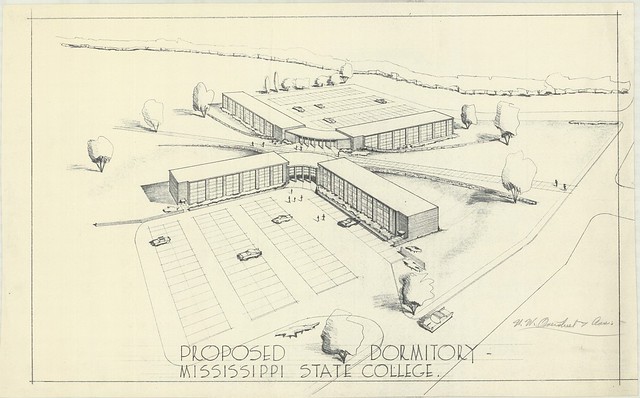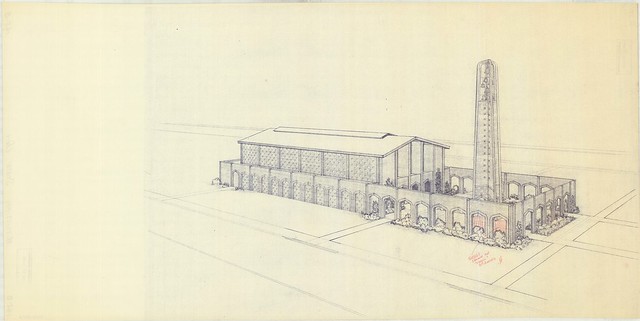A friend recently sent me a link to the Frederick Law Olmsted National Historic Site, National Park Service Digital Archives Flickr page. If you are unfamiliar with his name, you’re likely familiar with his work such as NYC Central Park, Niagara Falls State Park, and the Biltmore Estate in Asheville, North Carolina, to name a few. Olmsted (1822-1903) is recognized as the nation’s foremost park-maker. Olmsted moved his home to suburban Boston in 1883 and established the world’s first full-scale professional office for the practice of landscape design. During the next century, his sons and successors perpetuated Olmsted’s design ideals, philosophy, and influence. In 1980, the NPS acquired Olmsted’s former home and office in Brookline, Mass. along with thousands of original design records. A goal of the NPS has been to make these records accessible to the general public…
After a highly successful 15-year project to conserve and catalog the landscape design firm’s 139,000 historic plans & drawings collection, the Frederick Law Olmsted National Historic Site, a unit of the National Park Service (www.nps.gov/frla) has launched an ambitious effort to increase the visibility of and the access to these materials, while at the same time decreasing their handling and, in turn, preserving them for generations to come.
The collection also contains images from other firms that Olmsted Brothers, and later Olmsted & Associates worked with over the years.
I knew that Olmsted Successor firm had done some work in Mississippi at MSU, but I was surprised to see that they had so many other projects across Mississippi. You can use the Olmsted Research Guide Online to see the Finding Aid search for Mississippi.
All images are Courtesy of the National Park Service, Frederick Law Olmsted National Historic Site. You can view all the Mississippi related documents here…
Categories: Architectural Research, Historic Landscapes, Universities/Colleges








It is good that the NPS is digitizing not just the Olmsted records but associated records contained in the archive. MSU does not have many Overstreet renderings, usually just working drawings, so it is good to see a couple of the boomerang dorms. Same with the original Chapel of Memories design and William Rosamond’s unbuilt music building. Due to lack of funds or will, the music department and band operated in some cramped sheds until the 2000s. In a more perfect world, the MSU archives would be able to do this with Overstreet, Rosamond, and all the other architectural files they have, allowing for easier research instead of the traditional hassle of pulling files and boxes from storage.
LikeLike
That would be great if MSU and other institutions could do this and I think Flickr seems to be a good format for it. Assuming the intellectual property rights of architects are not violated.
LikeLike
Literary critic Edmund Wilson has a chapter dedicated to Olmstead in his book, Patriotic Gore: Studies In the Literature of the American Civil War. Olmstead’s “double career” as agricultural economist and journalist for the New York Times before he became a parks planner, took him on assignment of two tours through the Southland. A three-month tour in 1852 and an eight-month tour from 1853 to 1854 took him to Texas, the “backwoods of Mississippi” and the Appalachian highlands. Olmstead had these reports condensed into a book, The Cotton Kingdom.
LikeLike